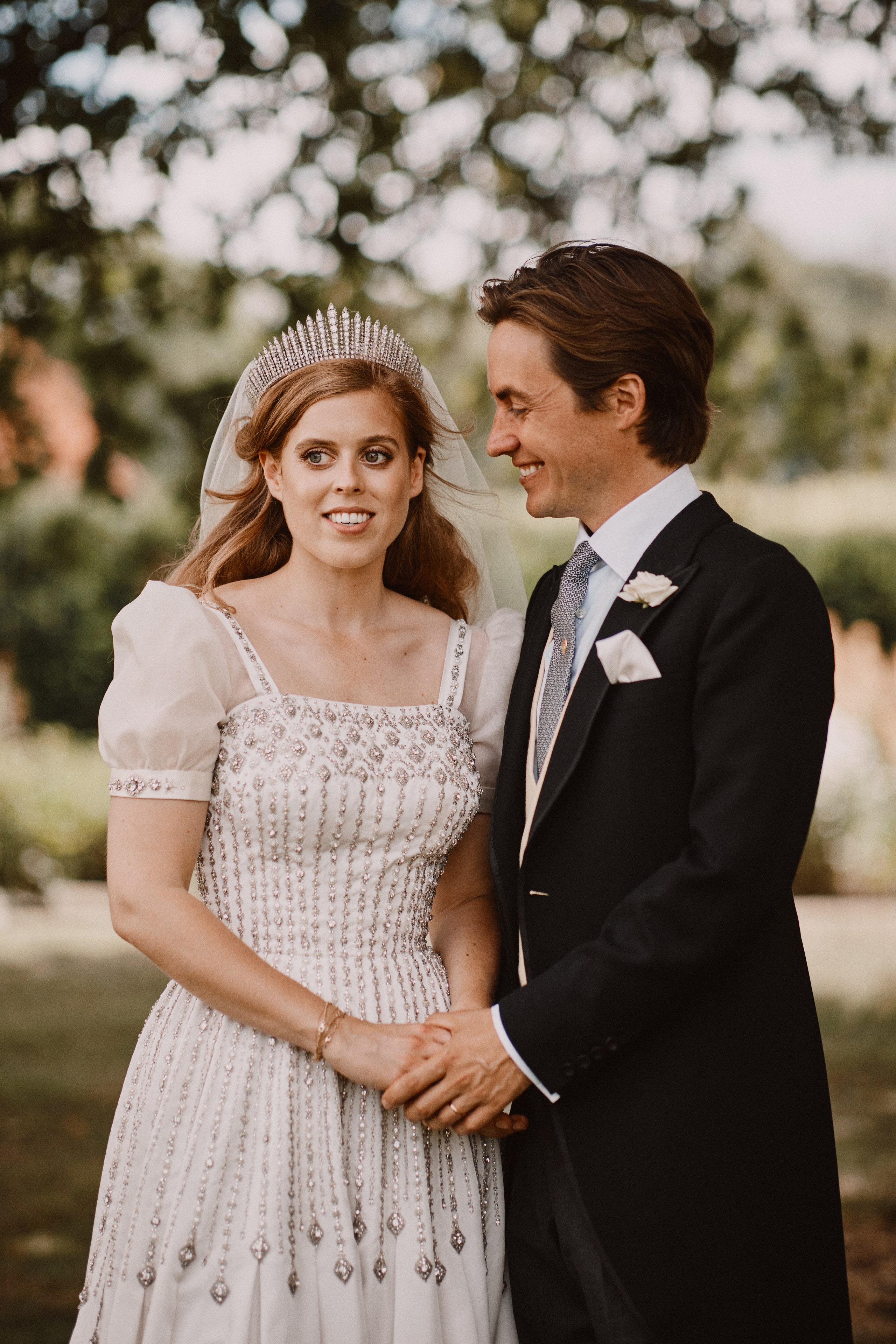It is common for the royal family to make a tiara borrowed from the Queen their choice of headgear on their wedding day. The Duchess of Cambridge chose the 1936 Cartier Halo tiara, the Duchess of Sussex wore Queen Mary’s 1932 Diamond Bandeau, and Princess Eugenie selected Boucheron’s 1919 Greville Emerald Kokoshnik tiara. At Princess Beatrice’s wedding to Edoardo Mapelli Mozzi in Windsor on 17 July, she became the first bride of this generation to wear the same tiara Queen Elizabeth herself wore when she married the Duke of Edinburgh in 1947.
The latest tiara to return to the royal spotlight is the Queen Mary Fringe, which was originally commissioned from Garrard by the Queen’s own beloved grandmother in 1919. Mary, who frequently had her jewellery re-worked into more fashionable designs, used the diamonds from a necklace that Queen Victoria had gifted her on the occasion of her wedding to George V, Victoria’s grandson, in 1893. These diamonds stretch back even further in royal history, since they were originally owned by George III and his wife Queen Charlotte, which is why it is also sometimes referred to as the King George III Fringe or the Hanoverian Fringe tiara.
This adaptation of the jewel to a convertible piece that could be worn as a necklace or as a fashionable kokoshnik-style tiara if attached to a frame, led to near-disaster on the then Princess Elizabeth’s own wedding day. Her mother, Queen Elizabeth, had been gifted the tiara by Queen Mary in 1936, the year that her husband George V unexpectedly became King. Princess Elizabeth in turn borrowed it for her wedding to the dashing Philip Mountbatten, but as she was getting dressed, the frame of the tiara snapped.
The Queen recounted this story to the Duchess of Cambridge as they toured a Buckingham Palace exhibition of the Duchess’s own wedding dress in July 2011 shortly after her marriage to Prince William. “The catch, which I didn’t know existed, it suddenly went [gesturing with her hands],” explained the Queen. Fortunately a crown jeweller was on hand to hastily repair it so the Queen could still wear it on her special day. “I think they taped up the spring,” she recalled.
The Queen told the story of the tiara breaking on her own wedding day to the Duchess of Cambridge as they toured a Buckingham Palace exhibition of the Duchess’ wedding dress in July 2011, a couple of months after she married Prince William.
According to the book, Garrard: The Crown Jewellers for 150 Years, the mother of the bride remained a picture of calm amidst the chaos caused by this ill-timed wardrobe malfunction, remarking, “We have two hours and there are other tiaras.” The book adds that a police escort accompanied the jeweller to the Garrard workshop to enable a hasty pre-ceremony repair so the Princess could in fact wear her chosen tiara. Photos of the wedding day show evidence of the hurried repair where the central fringe is slightly askew.
In 1973, Princess Anne borrowed the same tiara on the occasion of her wedding to Mark Phillips, and the Queen later inherited it from the Queen Mother when the latter died in 2002. Until Princess Beatrice’s wedding on Friday, it has rarely been seen in public since, although the Queen did wear it in a Diamond Jubilee Portrait taken in the Blue Room at Buckingham Palace by Julian Calder for the Governor-General of New Zealand in 2011.
It is fortunate that the Queen and Queen Mother’s practicality in the face of disaster means that the royal tradition of wearing this supremely elegant tiara can continue more than 100 years after it was first created.
More from British Vogue:

